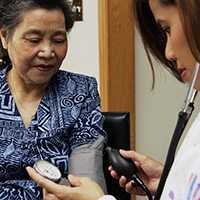Past Programs

Community Transformation Grants Program (CTG) (2011-2013)
CTG supported community-level efforts to reduce chronic disease. All awardees worked to improve the health of the nation with strategies that focused on tobacco-free living, active living and healthy eating, and clinical and community preventive services to prevent and control high blood pressure and high cholesterol.
Funded by the Affordable Care Act’s Prevention and Public Health Fund, CTG ran for 5 years and reached more than 1 in 3 U.S. citizens—about 120 million Americans. In 2011, CTG awarded $103 million to 61 state and local government agencies, tribes and territories, and nonprofit organizations in 36 states. In 2012, CTG expanded to reach more people in more places. The CTG Small Communities Grants awarded approximately $70 million to communities with a population size of less than 500,000 residents.

Communities Putting Prevention to Work (CPPW) (2010-2012)
CPPW was a locally driven initiative that supported 50 communities to tackle obesity and tobacco use, two of the leading preventable causes of death and disability in the United States. CPPW communities spanned the nation and included urban, rural, and tribal communities.
More than 55 million people—or 1 out of 6 Americans—live in a city, town, or tribal community that benefitted from this initiative. These communities made healthy living easier by implementing environmental changes such as
- Increasing opportunities for safe, active transportation;
- Ensuring the provision of healthy food and beverage options in schools;
- Limiting exposure to secondhand smoke; and
- Increasing available tobacco cessation resources.
These efforts laid the foundation for improved quality of life in the short term and a sustainable reduction in diseases associated with obesity and tobacco use over the long term.

Healthy Communities Program (2008-2012)
The Healthy Communities Program (HCP) worked with communities through local, state, territory, and national partnerships to establish, advance, and maintain effective population-based strategies to reduce the burden of chronic disease and achieve health equity. Strategies focused on where people live, learn, work, and play, and addressed major risk factors, including tobacco exposure, physical inactivity, and unhealthy eating. Since 2009, 247 communities received CDC resources.
HCP —
- Increased access to healthy foods in parks, schools, and low-income neighborhoods;
- Increased breastfeeding rates by providing support to nursing mothers such as adequate facilities in public spaces;
- Increased residents’ physical activity opportunities by working with schools to require daily physical education with at least the minimum recommended physical activity time;
- Increased community walking, biking, and trail paths;
- Provided safer opportunities for exercise by implementing the Complete Streets strategies and Safe Routes to Schools; and
- Decreased residents’ exposure to secondhand smoke in parks, playgrounds, and public buildings.
- Page last reviewed: March 7, 2017
- Page last updated: March 7, 2017
- Content source:


 ShareCompartir
ShareCompartir